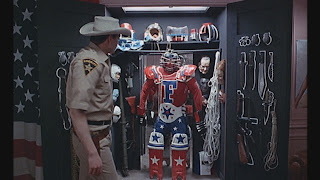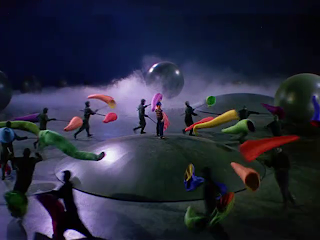Premiering at the end of a decade already rife with excessive political satires from (where else?) France, is Mr. Freedom, a film that seems more a byproduct of drugs (or just flat out insanity) than a social/critical agenda. Mr. Freedom (1969) could be described as Team America: World Police shot by Lloyd Kaufman, only Team America is actually satirical, and Kaufman better at narrative coherency. There are some aspects of this movie's narrative that seriously baffle me, which is sad, because the bear bones of its plot are seriously amazing.
The plot is as follows: Mr. Freedom (geared up in attire General Patton would be proud of), the legendary hero of Freedom Incorporated, is sent overseas to stop an impending communist takeover of France from both China and the Soviets. How the combination of a plot so dynamic and cinematography so outrageous could lead to an incredibly boring (and moronically preachy) film is really a marvel in itself. The film's pacing is strangely slow (perhaps due to uninteresting camera work), and Mr. Freedom's ignorant banter on minorities only seems to reinforce stereotypes rather than combat them (banter which occurs at moments set up to make us laugh, leading to various inconsistencies in the film's overall tone). Had Mr. Freedom's psuedo-political preaching been exchanged for punches, the film could have been something great. What I mean to say is, that if the director were smarter, he would have made his film more stupid (if that makes any sense at all).
But I wouldn't have spent all this time gathering stills had I thought this film was completely devoid of enjoyment. Certain aspects of Mr. Freedom (to be listed 1 to 3) do have cause for appreciation, and do set it apart from your typical low-budget farce.



































